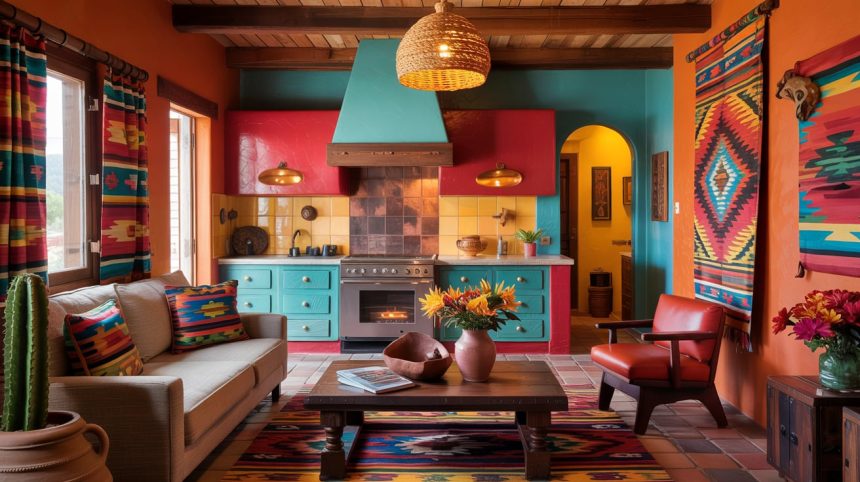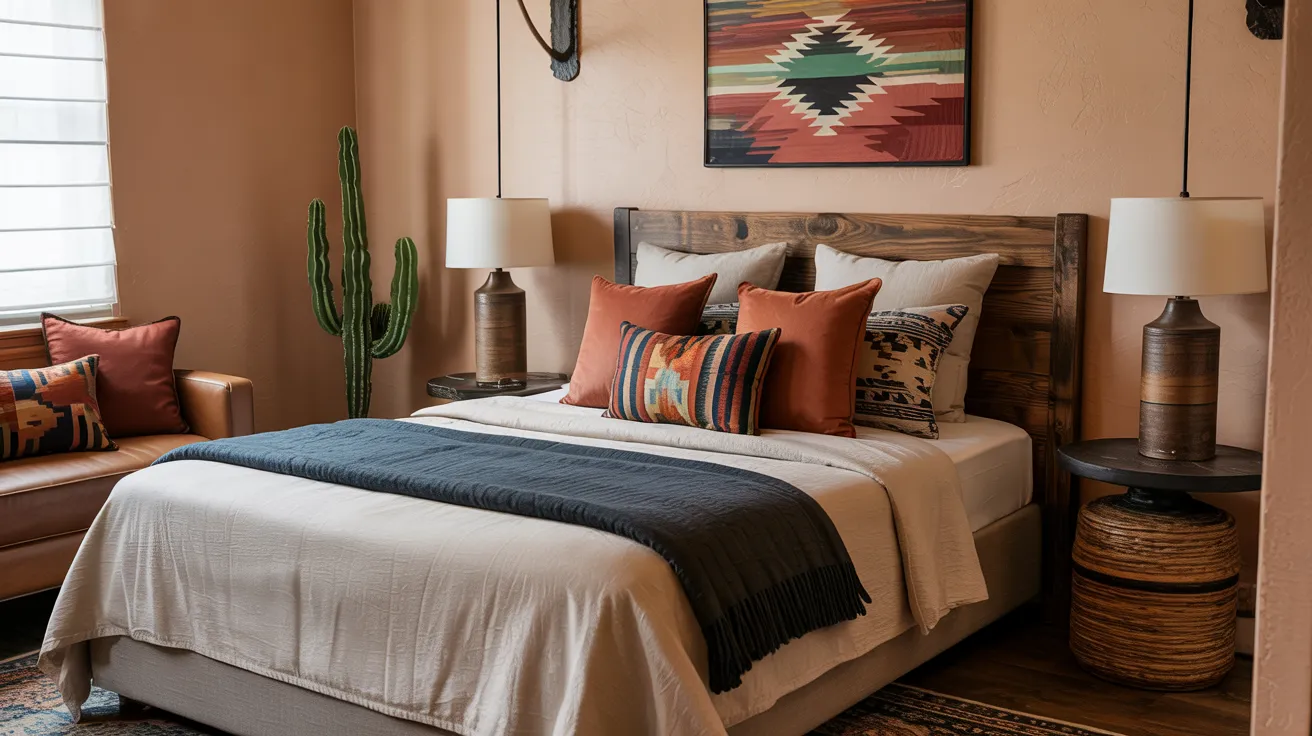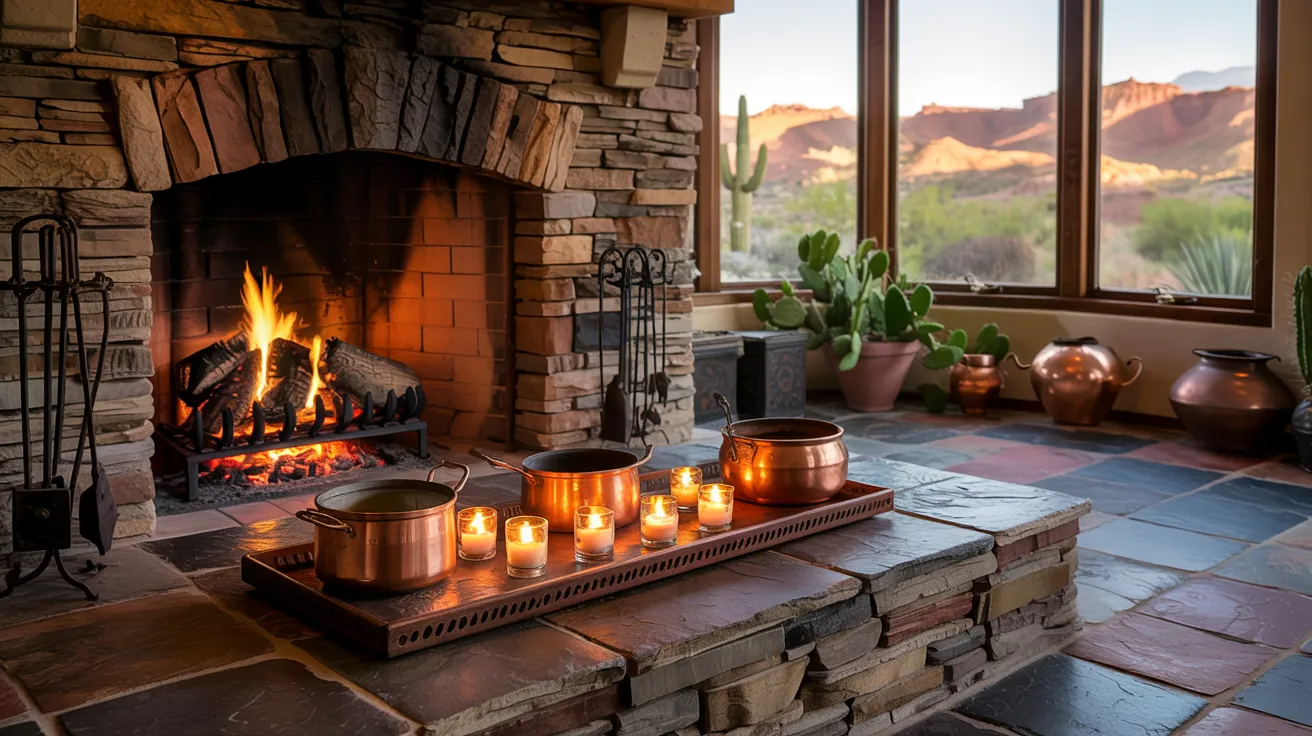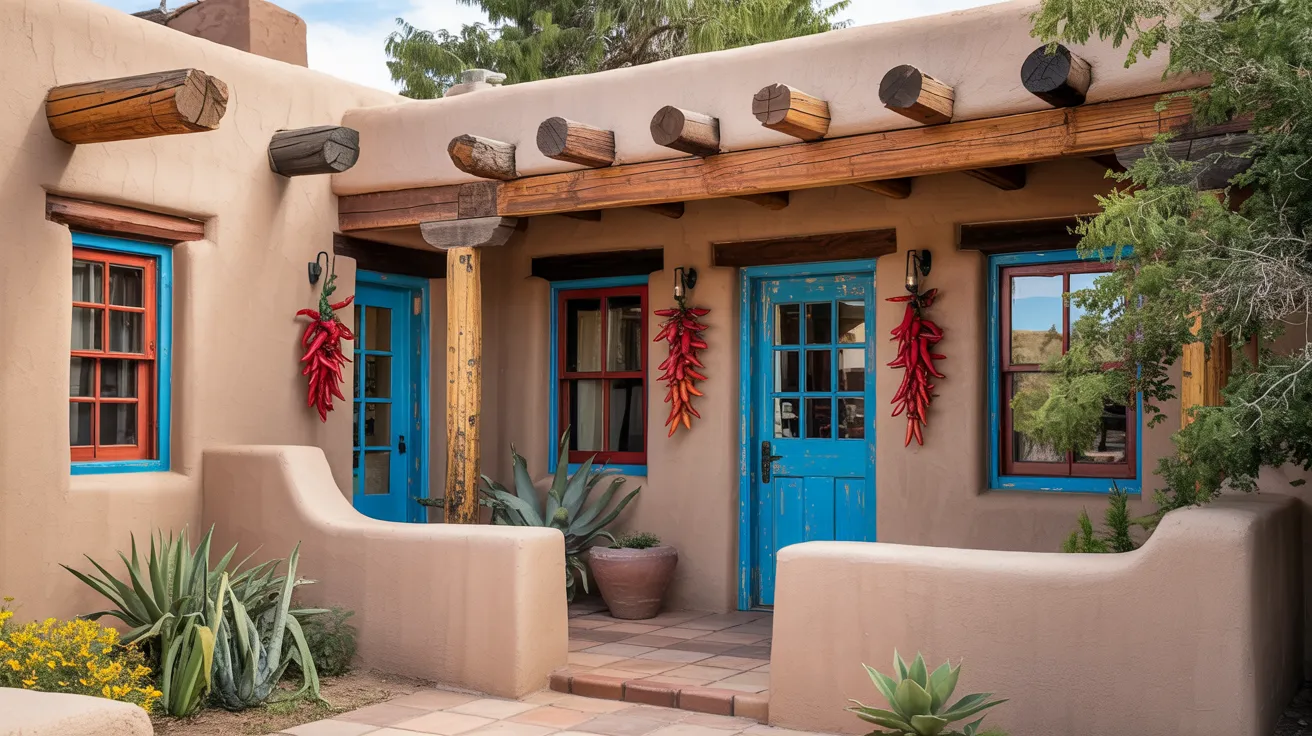Are you looking to add warmth and character to your home?
Plain, cold spaces can feel lifeless and boring, leaving you with rooms that fail to reflect your personality. I understand this struggle.
I’m here to show you how Southwest colors can transform your home from dull to vibrant. These rich, warm tones bring comfort and a sense of place to any room without costing a fortune.
In this post, I’ll share practical tips for using Southwest colors in different rooms, how to mix them with various materials, and ways to blend them with your current style. You’ll learn how to create spaces that feel both cozy and striking.
What Are Southwest Colors?
Southwest colors include warm reds, oranges, and browns that mirror the desert landscape. Bright yellows reflect sunshine, while turquoise and deep blues echo the sky.
Earthy neutrals serve as perfect backgrounds for these bold hues.
These colors come from both Native American art and Spanish colonial styles. Native tribes used natural pigments from plants, minerals, and clay for pottery and textiles.
Spanish settlers brought their love of bright colors, seen in old mission churches and homes. This mix of styles created the unique color blend we now call Southwest.
Benefits of Southwest Colors in Your Space
- Creates a Warm, Inviting Atmosphere: Southwest colors make rooms feel cozy and friendly. The warm reds and oranges mimic the glow of sunset, making spaces feel lived-in and homey. These rich tones help create a space where people want to sit, talk, and stay a while. Even small touches of these colors can add warmth to a cool, plain room.
- Fosters a Connection with Nature: The earthy browns and clay reds bring the outdoors inside. These colors remind us of rocks, soil, and desert sand. When you use these tones in your home, you build a link to the natural world. This connection can help you feel more at peace and grounded in your space.
- Versatile and Timeless: Southwest colors complement a wide range of styles. They blend with rustic wooden items but also pop against modern white walls. Unlike passing trends, these colors have been used for hundreds of years and still look fresh today. You can add them to your home now and enjoy them for years to come.
Southwest Colors for Different Rooms in Your Home
1. Living Room
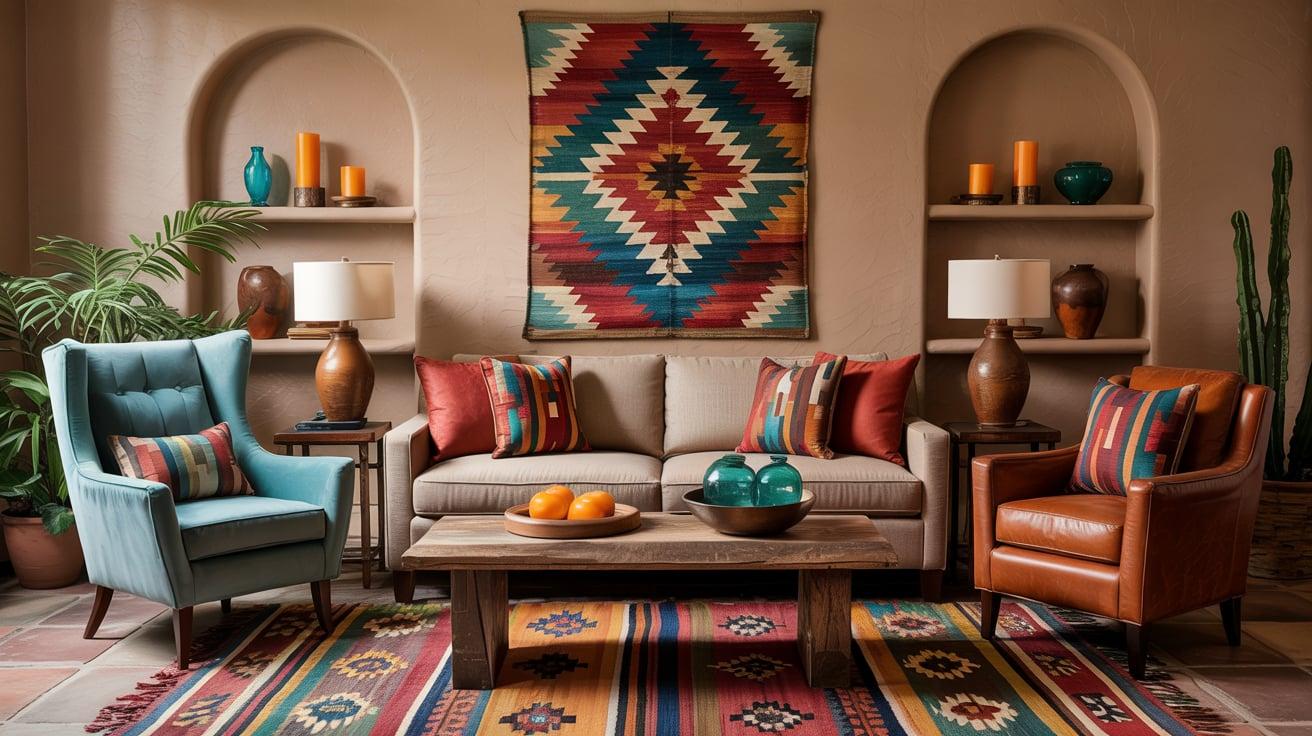
In the living room, start with a neutral base and add pops of Southwest colors. Try rust-colored throw pillows on a tan sofa or a turquoise accent chair.
A painted clay pot or a rug with earthy reds and browns can tie the room together. Walls in soft clay tones create a warm background. For a subtle touch, add small items like orange candles or blue glass bowls to shelves and tables.
2. Bedroom
For the bedroom, use softer Southwest tones to create a calm space. Light terracotta or sandy beige walls help promote rest. Add depth with a dark blue throw at the foot of the bed or rust-colored accent pillows.
A wooden headboard pairs well with these colors. Keep the main bedding in neutral tones and use Southwest colors as accents to avoid making the space too busy for sleep.
3. Kitchen and Dining Area
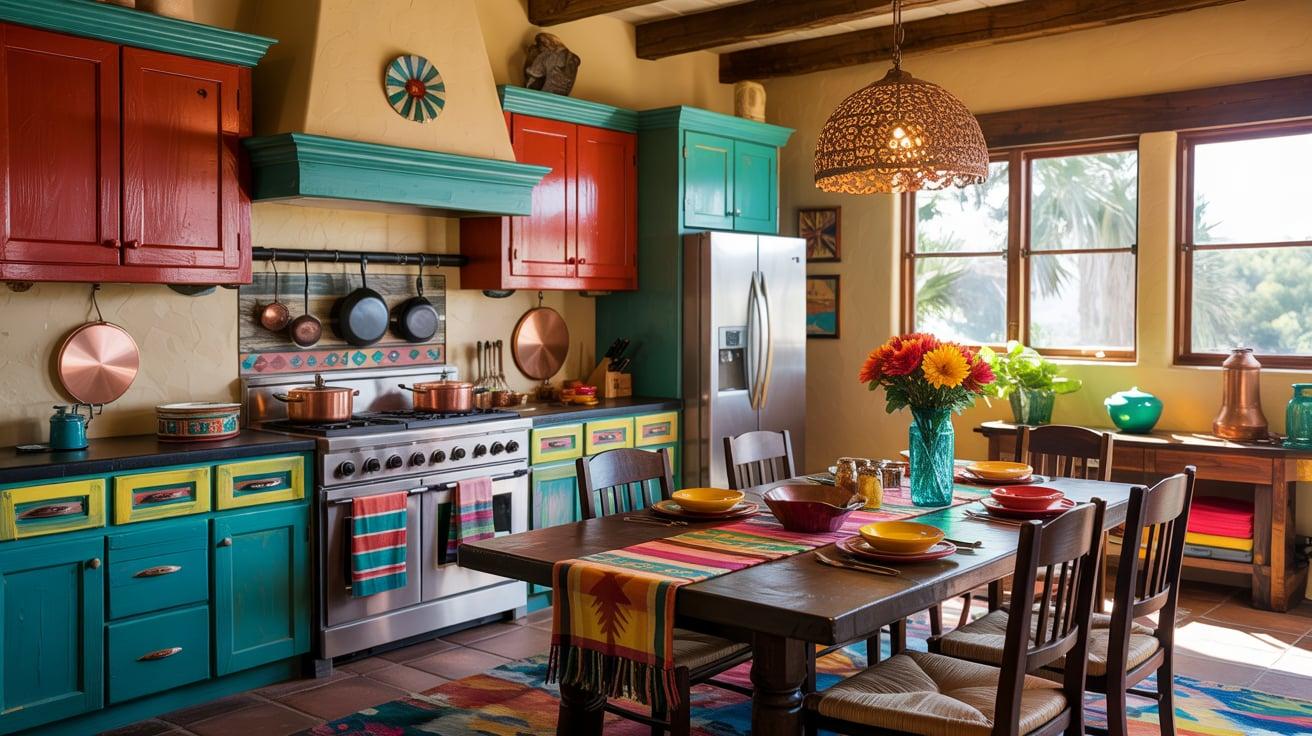
The kitchen is perfect for bolder Southwest colors. For a striking look, try turquoise or clay red cabinet paint.
If you want something less fixed, use these colors in dishes, table runners, or seat cushions. Copper pots and pans add warmth and reflect the metal tones of Southwest style.
A yellow accent wall can make the dining area feel sunny and happy, perfect for meal times with family and friends.
Incorporating Southwest Colors in Outdoor Spaces
Patios and Porches
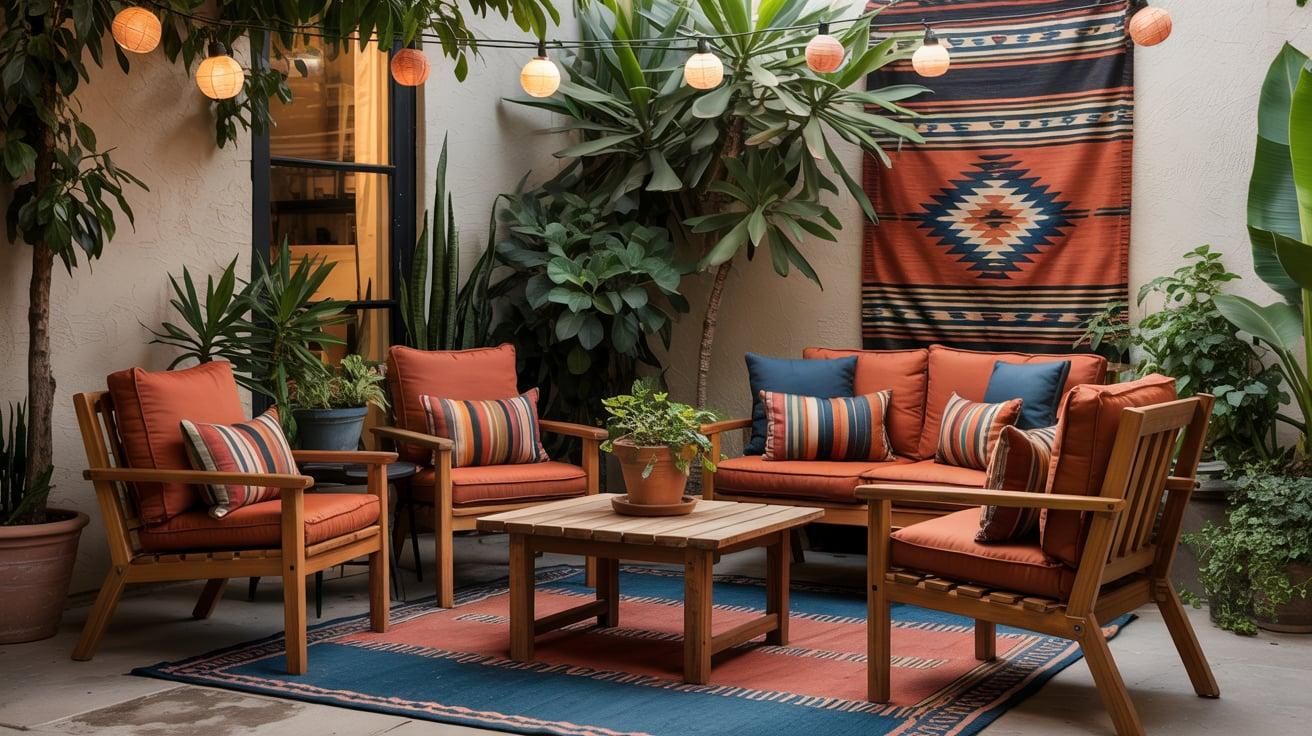
Outdoor spaces are ideal for incorporating Southwest colors, as they complement the natural world. Choose patio furniture in terracotta, burnt orange, or blue. Add cushions and pillows in these shades to plain chairs.
Clay pots in various sizes can hold plants and add color. Hang a woven blanket with Southwest patterns as wall art. String lights with paper shades in rust or yellow create a warm glow at night.
A blue or red outdoor rug ties the space together and adds comfort to the feet.
Garden and Landscaping
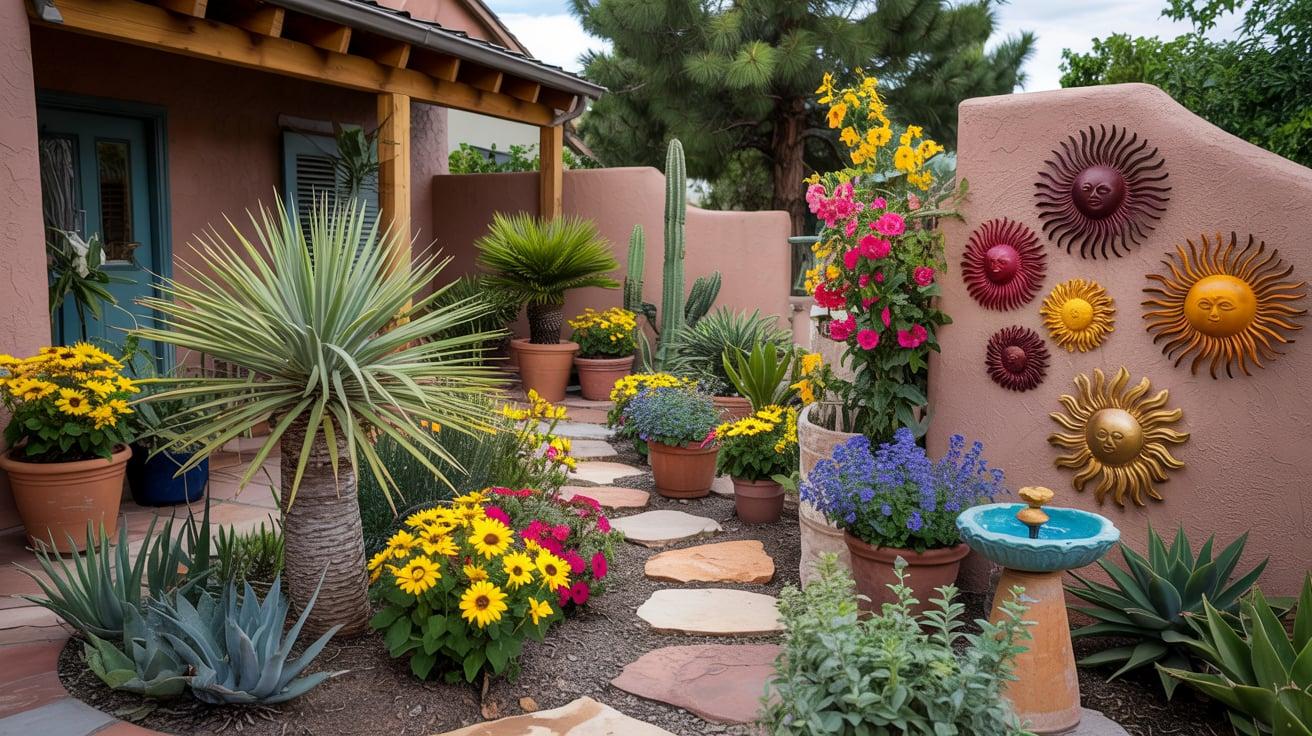
Select plants that naturally show off Southwest colors. Red yucca, yellow sunflowers, and blue sage bring these hues to life. For container plants, use terracotta pots of all sizes.
Add stone pathways in tan and brown tones to evoke the feel of desert sands. Garden art, such as metal suns in rust or yellow, can stand out against green plants. Bird baths or small water features in blue add a nice contrast.
For fences or walls, consider a wash of soft, clay-colored paint as a backdrop for plants.
Complementing Southwest Colors with Materials and Textures
Wood and Leather
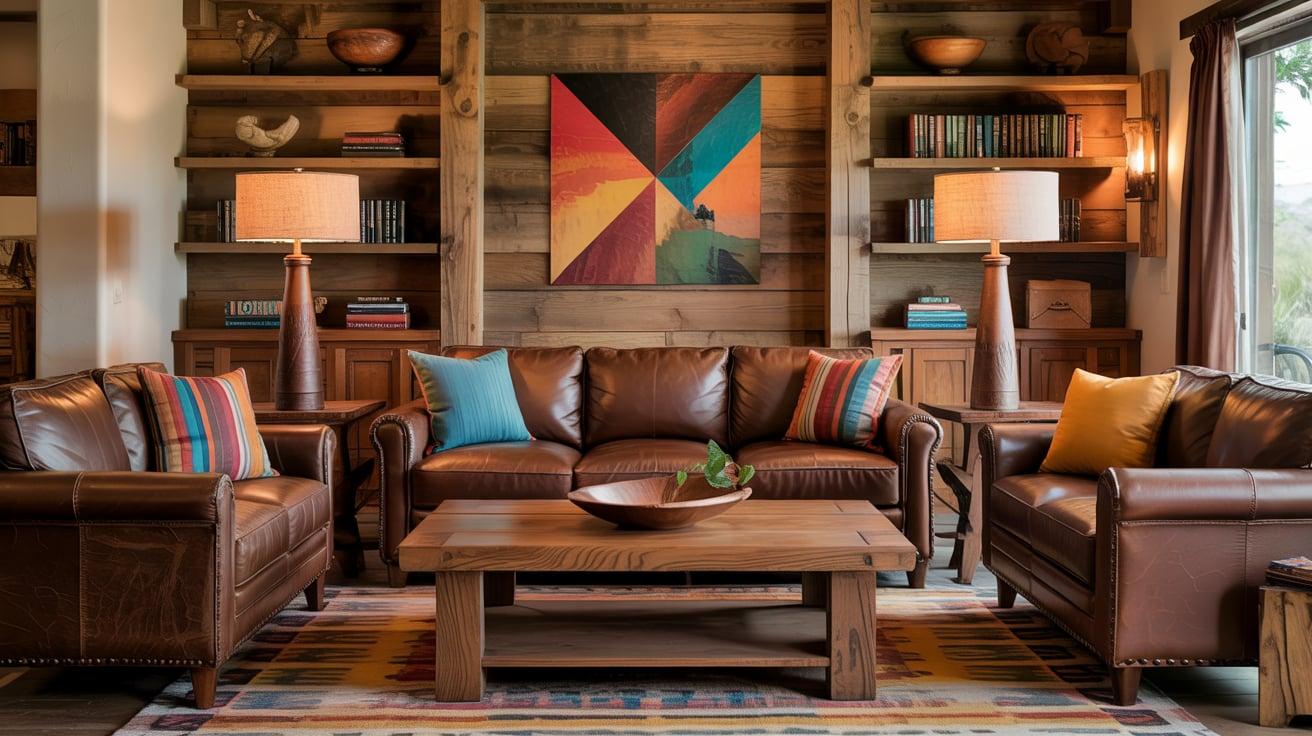
Wood and leather complement Southwest colors. Raw, unfinished woods like pine or oak in their natural state make the perfect base for these warm tones.
A wooden coffee table or bookshelf brings out the earthy feel of rust or clay colors. Dark or medium brown leather sofas or chairs look great with turquoise or yellow accents.
The texture of leather adds depth and interest, while aged leather with its cracks and marks tells a story. Try wooden bowls, frames, or small tables to add warmth to any room with Southwest colors.
Metal and Stone
Copper and wrought iron fit perfectly with the Southwest style. The warm glow of copper pots, light fixtures, or even small accent pieces brings out the red and orange hues in the color scheme.
Black wrought iron adds contrast and strength. Look for candle holders, bed frames, or small tables. Natural stones like slate or river rock can be used in flooring, counters, or accents.
Their varied colors often include the browns, tans, and grays that support bolder Southwest tones. Even small stone coasters or bookends add weight and texture to your space.
Southwest Color Schemes for Different Styles
1. Modern Southwest Design
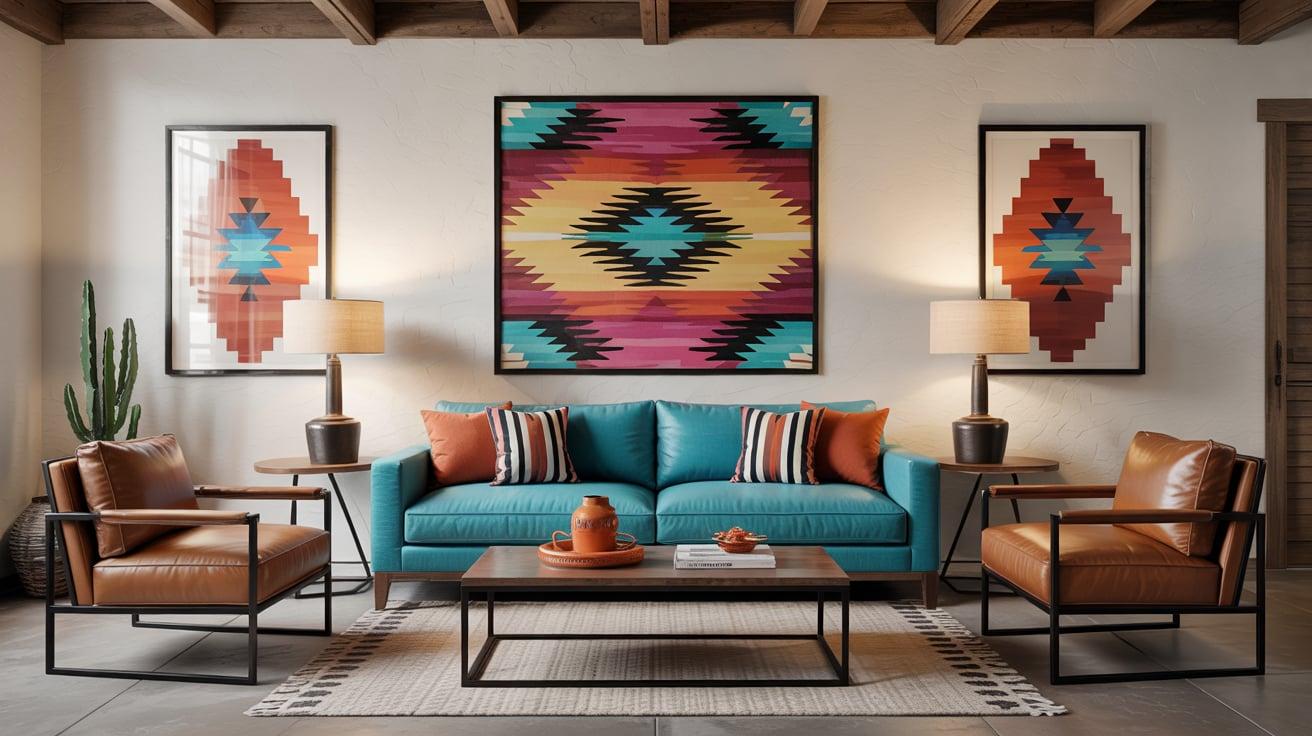
Mix Southwest colors with clean lines and simple shapes for a modern look. Pair a bright turquoise sofa with white walls and minimal decor.
Use geometric patterns rather than busy prints. Choose furniture with metal frames and simple forms. Add pops of burnt orange or rust in art pieces while keeping the background neutral and uncluttered.
2. Rustic Meets Southwest
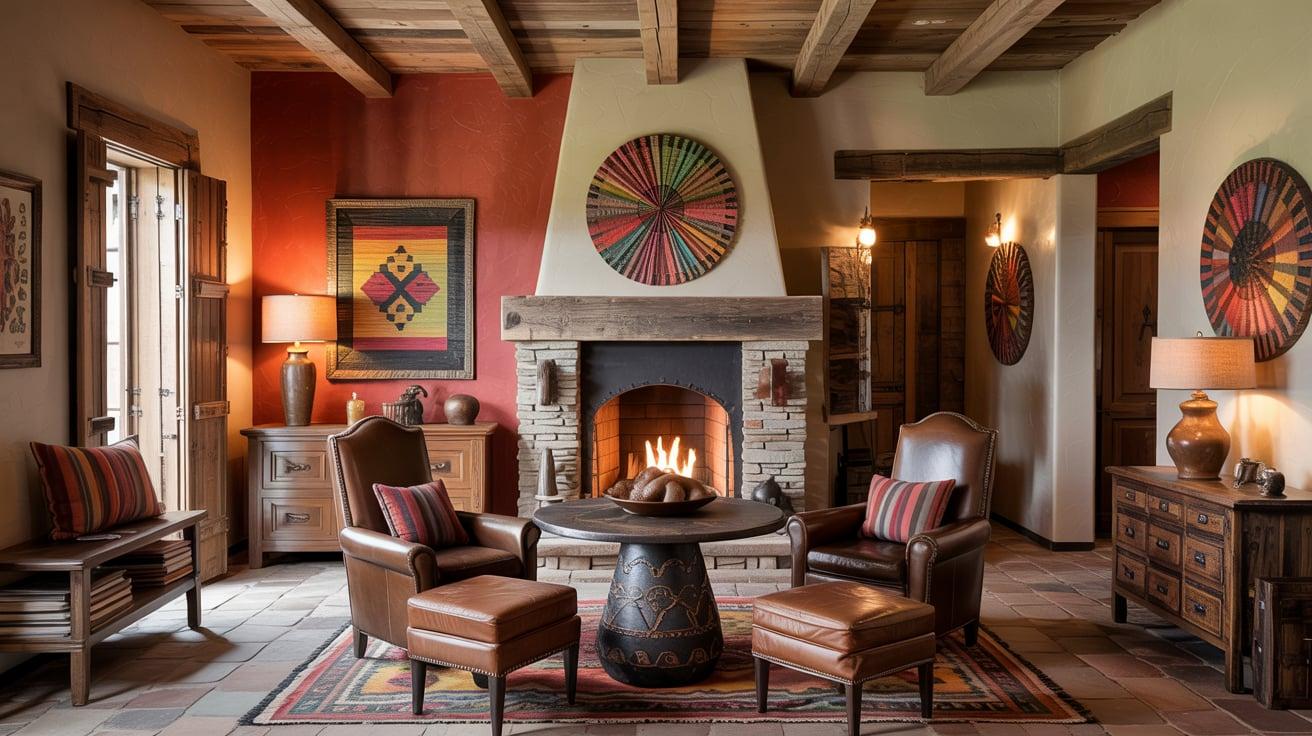
Blend weathered wood beams with walls in clay red or sandy tan. Add leather chairs in rich brown next to tables with iron details. Layer cozy textiles in deep blue and rust colors over neutral furniture.
Use worn metal finishes and rough-hewn wood pieces to enhance the natural feel of Southwest colors in your space.
Famous Southwest Color Palettes in Architecture and Design
1. Santa Fe Style
Santa Fe buildings perfectly use Southwest colors. Soft clay and tan adobe walls form the base of this look. Blue window frames and doors stand out against these earthy backgrounds.
Red chile ristras hung by doors add bright spots of color. Inside, walls often feature hand-troweled plaster in warm tones. Wooden beams called vigas cross ceilings, adding natural brown tones.
Floors in terra cotta tile bring warmth underfoot. This style blends colors and textures for a rich, layered feel.
2. Influence of Native American Art
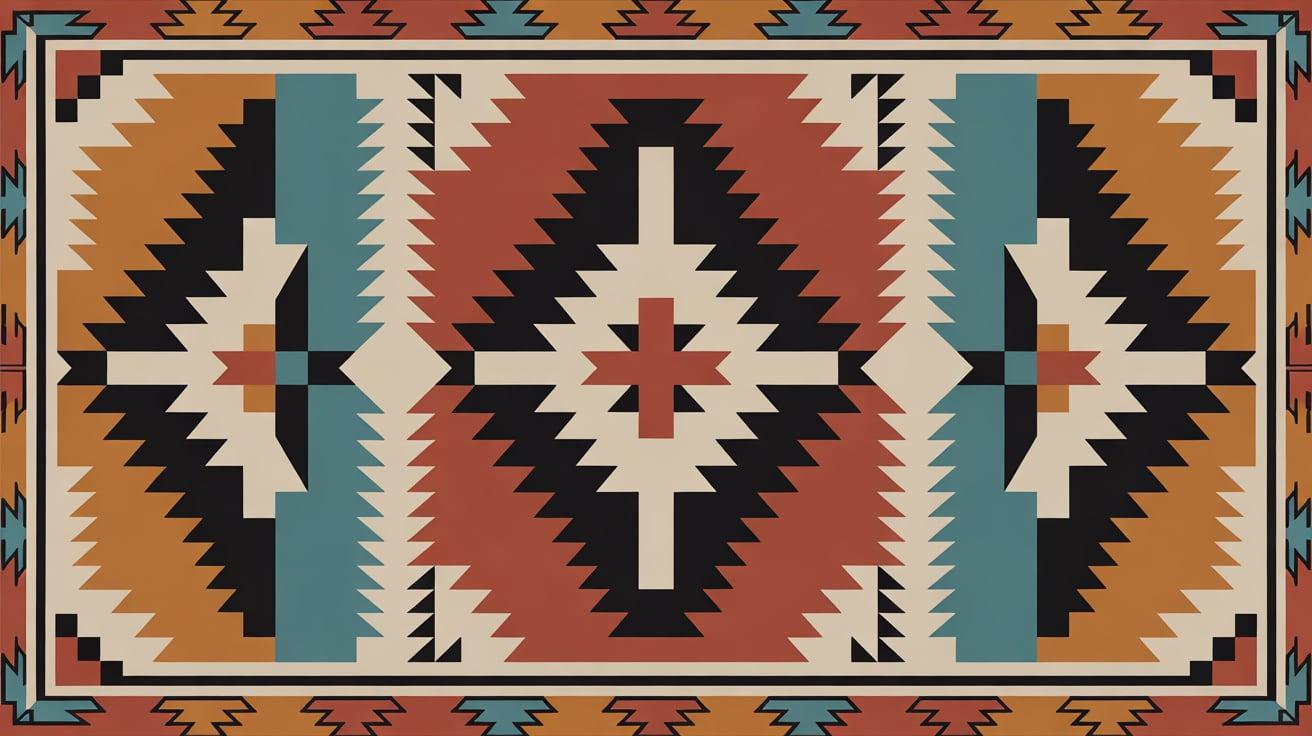
Native American art has shaped Southwest color use for hundreds of years. Navajo rugs with bold red, black, and white patterns show how these colors work together. Hopi pottery uses orange and black on a clay base.
Zuni art often includes the bright blue of turquoise stones. These art forms teach us how to balance bright colors with neutral tones.
The natural dyes and pigments used in these works connect directly to the land, showing how to create color schemes that feel true to place.
Conclusion
Looking back at what we’ve learned, Southwest colors offer more than just style; they bring warmth, comfort, and meaning to your living spaces.
These earth-toned reds, sunny yellows, sky blues, and sandy neutrals connect us to nature and history.
The beauty of these colors lies in their flexibility. You can use them boldly in a modern apartment or subtly in a traditional home. These tones benefit each room in different ways, from restful bedrooms to lively kitchens.
By pairing these colors with natural materials like wood, leather, and stone, you create spaces that feel true to the Southwest spirit.
What colors from the Southwest palette might you try first in your home? The perfect shade is waiting to add its special magic to your space.

